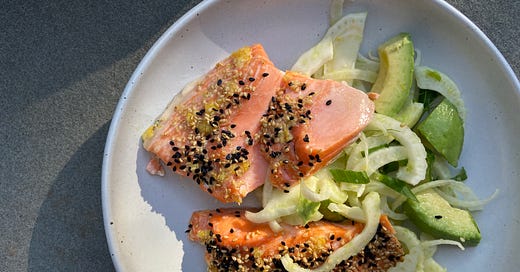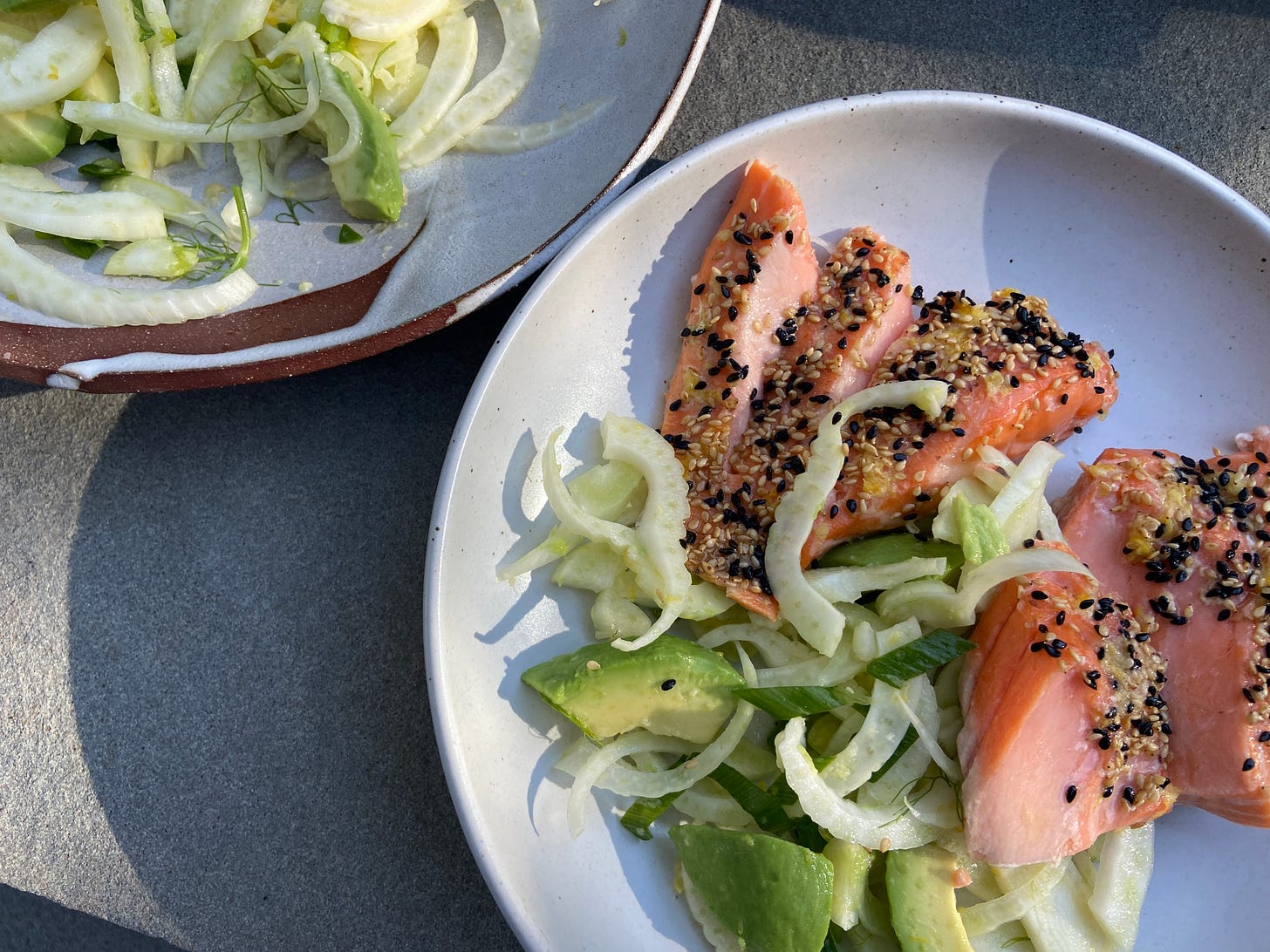The one way to make fish
Any fishes and any seasonings, like this recipe for sesame-lemon salmon.
“Simple, delicious recipes that WORK and don't require buying (and wasting) a million different ingredients.” —Jane Black & Liz Dunn at
There are many mantras to live by and one of mine comes from the wise J.J. Goode: “Just, like, cook it in a pan.”
No matter how many fun, fresh, and funky ways I make fish, I return to the ritual of just, like, baking it in the oven. It’s the least stinky, splattery, mess-uppable way I know how, and it goes like this:
1.Get some fish.
The hardest part. The frozen section will offer the freshest options since the fish was zapped cold right at the source. Seafood Watch can help pick a sustainable option.
This method works for any firm and flaky fish, from slender fillets of trout to a whole slab of meaty halibut. Get what looks good and what you want to eat.
2. Rub with fat (essential) and seasonings (not essential).
Place the fish in a baking dish or sheet pan, skin side down if there’s skin. To keep the fish from sticking to the pan, line it with parchment or lightly grease it.
Season the fish with salt and olive oil or melted butter — and maybe also some flavorings. Options include:
Chopped herbs, like chives, dill, parsley, or thyme
Grated ginger, garlic, or citrus zests
Ground or whole spices or spice blends, like curry powder or crushed fennel seeds and red pepper
Pastes, like harissa, Thai curry paste, mustard, miso, hoisin, and gochujang
Or some combination of the above, like today’s recipe of ginger, lemon, and sesame seeds. Or nothing but salt and oil!
3. Bake at 325°F until it’s done.
Or really any temperature below 350°F. Samin Nosrat’s Slow-Roasted Salmon in Salt, Fat, Acid Heat calls for 225°F. Sally Schneider’s in A New Way to Cook goes for 275°F. The versions in my cookbook call for 300°F. I guess I’m impatient these days and crank the heat, ever so slightly, to 325°F.
The not-too-hot heat results in tender fish that’s difficult to overcook. The timing will depend on the type and size of the fish, but you can tell when it’s done when the fish flakes when pulled with a fork or an instant-read thermometer inserted into the thickest part is 120°F.
Because the method works with many different fishes and seasonings, memorizing this one technique can lead you to many future meals. You know the proverb: Give a cook a fish recipe, and they’ll eat today. Teach them how to cook fish, and they’ll eat for a lifetime.







